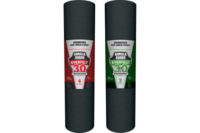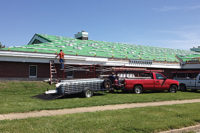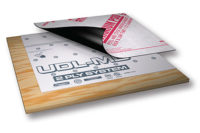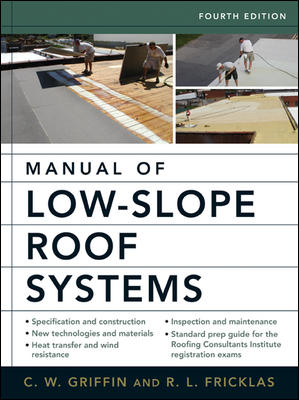Roof underlayment got its start in the early 1800s during the California Gold Rush. During that early era, paper was laid and then tar placed on top, providing a quick and easy way to put up a roof.
With advances in material sciences and the popularity of composite materials, underlayment has evolved. Many shortcomings of the old reliable standard felt have been improved with new synthetic roof underlayment products.
Synthetic underlayment consists of artificially manufactured materials from polypropylene, fiberglass, polyethylene and polyester. They’re also much more durable, stronger and lighter than traditional underlayment.As with most technology advancements in any industry, synthetic underlayment comes with a higher cost. Though synthetic underlayment will cost you about 30 percent more per roll, there is value in the upgraded cost. A roll of synthetic roof underlayment weighs much less than its traditional counterpart. That same roll of synthetic will also give the installer 10 squares per roll — five times the two squares per roll for traditional underlayment. Using synthetic underlayment means fewer trips up and down the ladder for your workers.
Any roofer with a day’s worth of experience on the job has dealt with reinstallation of traditional underlayment due to tearing and wrinkling. Synthetic underlayment resists these types of incidences due to its inherent strength and material properties. It also tends to have better walkability, as many synthetic underlayments come with high-traction surfaces. This can become really important if the work crew has to scramble to get the underlayment on as an unexpected storm front rolls over the jobsite.
The other big key is some synthetic underlayments can be set in place uncovered for up to six months. For large commercial jobs, this means less worry about underlayment being ruined by exposure to inclement weather and harsh ultraviolet rays while awaiting shingle installation.
Atlas® Roofing Corporation now offers a tougher, premium product for use in jobs with a long open time from the dry-in to the roof covering being installed. SUMMIT® Synthetic Underlayment is a premium, high-strength, woven-fabric-based roof system component appropriate for use in virtually all steep-slope roof covering systems.
SUMMIT® is fully compatible with asphalt shingles, metal roof coverings, clay tile, slate, concrete tiles, wood shingles and shakes, or any other code-approved steep-slope roof covering. It is constructed of a lightweight, extremely strong, woven polypropylene fabric with UV and water resistive coatings and packaged for convenience in 10-square rolls weighing less than 30 pounds each. SUMMIT® is unaffected by exposure to water and sunlight for at least six months — exactly what is needed to survive those special needs jobs.
For more information, visit www.atlasroofing.com.








Report Abusive Comment